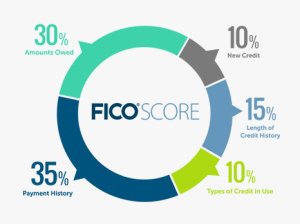Interpreting Your Credit Score: What’s Behind the Numbers?
You might have seen one freecreditreport.com’s endearing commercials — often featuring a guitar-clad customer singing of their credit woes and reminding viewers to check their credit scores frequently. Even if you haven’t, numerous advertisements, comedy routines, and advice columns serve as daily reminders of the importance of credit scores in our lives.
Yet, if you take the time to get a credit report, you might still be wondering, what’s the difference between a 400 and a 650? How did they even calculate this? What’s a “good” credit score?
To dig into the meat of it all, let’s get down a few basics:
- FICO scores are the most commonly used credit scores, yet not every available credit score offered online is a FICO score.
- FICO scores are only calculated based on available data in your credit reports. With that in mind, remember that the three main credit bureaus — Equifax, TransUnion and Experian — may have different credit information on file for you. This means your credit score may differ by bureau.
- You are considered a lower risk if you have a higher score. If you are perceived as less of a risk, you qualify for more loans and lower interest rates. Scores above 720 usually qualify for the best benefits, but you are probably still qualifying for good benefits with a score in the 680-720 range. Below 680, it may be more difficult to secure a financially feasible loan.
With these facts to set us up, let’s look at the main criteria that is used to calculate your credit score. 
- Payment history: Whether you made on-time payments on past credit cards
- Amounts owed: The amount you still owe on credit cards
- Length of credit history: Often, the longer you’ve been in the game, the better your score. Different things may contribute to this portion of your score: how long you’ve had one account, the last time you used various accounts, or the average amount of time you have had all of your cards.
- Types of cards in use
- New credit: Creditors are especially looking to see if you opened many new accounts in a short period of time. Such might signal a higher risk customer.
As you review these factors, remember that the weight of each of these categories changes depending on your unique credit report and the information available.
Take some time this week to familiarize yourself with your credit score and consider the factors that contributed to your current score. Credit score fresh in your mind, you can check back next week for a column on how to increase your credit score.







